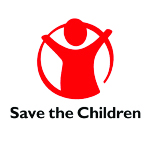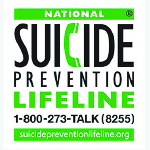External Organizations & Research
Organizations
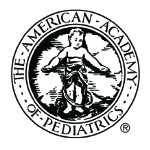 This comprehensive list from the American Academy of Pediatrics includes over 130 links to resources for families, child care facilities, and schools. They have a National Advisory Committee on Children and Disasters. At www.HealthyChildren.org there are resources on “Psychosocial Needs of Children and Families in Wake of Disasters and Crisis” and those on “Talking to Children about Disasters.”
This comprehensive list from the American Academy of Pediatrics includes over 130 links to resources for families, child care facilities, and schools. They have a National Advisory Committee on Children and Disasters. At www.HealthyChildren.org there are resources on “Psychosocial Needs of Children and Families in Wake of Disasters and Crisis” and those on “Talking to Children about Disasters.”
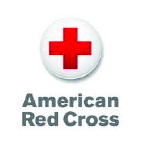 The Red Cross website has a tab for: children and young adults; resources and schools; tab pets and for people with disabilities. There is also a section on youth preparedness programs. The American Red Cross is committed to helping youth and young adults become better prepared for a disaster or emergency. They work closely with schools, scout groups, and youth-serving organizations to raise awareness of disaster risk and build resiliency among young people. The website has age-appropriate preparedness materials and trainings educate youth with engaging activities and easy action steps.
The Red Cross website has a tab for: children and young adults; resources and schools; tab pets and for people with disabilities. There is also a section on youth preparedness programs. The American Red Cross is committed to helping youth and young adults become better prepared for a disaster or emergency. They work closely with schools, scout groups, and youth-serving organizations to raise awareness of disaster risk and build resiliency among young people. The website has age-appropriate preparedness materials and trainings educate youth with engaging activities and easy action steps.
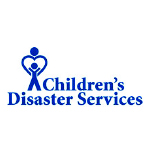 Children’s Disaster Services (CDS) has been meeting the needs of children by setting up child care centers in shelters and disaster assistance centers across the nation. Specially trained to respond to traumatized children, volunteers provide calm, safe and reassuring presence in the midst of the chaos created by tornadoes, floods, hurricanes, wildfires any natural or human caused disaster. The site has downloadable resources about how to support children experiencing a disaster. They provide brochures, videos and workshops.
Children’s Disaster Services (CDS) has been meeting the needs of children by setting up child care centers in shelters and disaster assistance centers across the nation. Specially trained to respond to traumatized children, volunteers provide calm, safe and reassuring presence in the midst of the chaos created by tornadoes, floods, hurricanes, wildfires any natural or human caused disaster. The site has downloadable resources about how to support children experiencing a disaster. They provide brochures, videos and workshops.
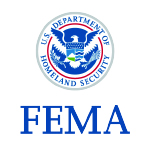 Official website of the Department of Homeland Security which contains Children Disaster resources. The FEMA Children Disasters Newsletter is a resource for youth preparedness practitioners, educators, parents, children, and teens. It shares timely research, examples of successful youth preparedness programs, safety tips, and resources related to youth preparedness and for specific disaster types. In addition, links are provided for coping with disasters, including a resource for children’s reaction to disasters by age. The Ready website has public education products that provide up-to-date information about how to prepare for emergencies. There is a Fact Sheet and Word Search for Kids with accompanying instructional materials for parents, teachers, and other educators. There is also a section on how to respond and support children by developmental age.
Official website of the Department of Homeland Security which contains Children Disaster resources. The FEMA Children Disasters Newsletter is a resource for youth preparedness practitioners, educators, parents, children, and teens. It shares timely research, examples of successful youth preparedness programs, safety tips, and resources related to youth preparedness and for specific disaster types. In addition, links are provided for coping with disasters, including a resource for children’s reaction to disasters by age. The Ready website has public education products that provide up-to-date information about how to prepare for emergencies. There is a Fact Sheet and Word Search for Kids with accompanying instructional materials for parents, teachers, and other educators. There is also a section on how to respond and support children by developmental age.
 National Association for the Education of young children created a resource that includes a list of organizations that help those in need, information on how to talk to young children about disasters they learn about in the media, and preparedness for child care and preschool programs in the U.S. They have also provided information about helping children during and after a disaster. There is also a section on resources to help child care centers and preschool programs prepare for disasters.
National Association for the Education of young children created a resource that includes a list of organizations that help those in need, information on how to talk to young children about disasters they learn about in the media, and preparedness for child care and preschool programs in the U.S. They have also provided information about helping children during and after a disaster. There is also a section on resources to help child care centers and preschool programs prepare for disasters.
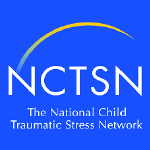 To raise the standard of care and improve access to services for traumatized children, their families and communities throughout the United States. The site has a link specific for type of trauma and resources and suggestions to assist children, teachers and caregivers. The site also includes research associated with the various types of trauma. In addition, the website provides Psychological First Aid training and handouts.
To raise the standard of care and improve access to services for traumatized children, their families and communities throughout the United States. The site has a link specific for type of trauma and resources and suggestions to assist children, teachers and caregivers. The site also includes research associated with the various types of trauma. In addition, the website provides Psychological First Aid training and handouts.
1-800-662-HELP (4357)
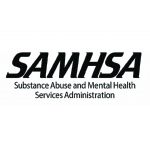 SAMHSA’s National Helpline, 1-800-662-HELP (4357), (also known as the Treatment Referral Routing Service) or TTY: 1-800-487-4889 is a confidential, free, 24-hour-a-day, 365-day-a-year, information service, in English and Spanish, for individuals and family members facing mental and/or substance use disorders.
SAMHSA’s National Helpline, 1-800-662-HELP (4357), (also known as the Treatment Referral Routing Service) or TTY: 1-800-487-4889 is a confidential, free, 24-hour-a-day, 365-day-a-year, information service, in English and Spanish, for individuals and family members facing mental and/or substance use disorders.
Research
IMPACT OF DISASTERS ON CHILDREN & FAMILIES
60,000 disaster victims speak: Part I. An empirical review of the empirical literature
Norris, F. H., Friedman, M. J., Watson, P. J., Byrne, C. M., Diaz, E., u0026amp; Kaniasty, K. (2002). 60,000 disaster victims speak: Part I. An empirical review of the empirical literature, 1981–2001. Psychiatry: Interpersonal and Biological Processes, 65(3), 207–239.
Children’s Disaster Reactions: the Influence of Exposure and Personal Characteristics
Pfefferbaum, B., Jacobs, A. K., Griffin, N., u0026amp; Houston, J. B. (2015). Children’s Disaster Reactions: the Influence of Exposure and Personal Characteristics. Current Psychiatry Reports, 17(7).
Children’s Disaster Reactions: the Influence of Family and Social Factors
Pfefferbaum, B., Jacobs, A. K., Houston, J. B., u0026amp; Griffin, N. (2015). Children’s Disaster Reactions: the Influence of Family and Social Factors. Current Psychiatry Reports, 17(7).
Weighing the Costs of Disaster: Consequences, Risks, and Resilience in Individuals, Families, and Communities
Bonanno, G. A., Brewin, C. R., Kaniasty, K., u0026amp; Greca, A. M. L. (2010). Weighing the Costs of Disaster: Consequences, Risks, and Resilience in Individuals, Families, and Communities. Psychological Science in the Public Interest, 11(1), 1–49.
Disasters and their impact on child development: introduction to the special section
Masten, A. S., u0026amp; Osofsky, J.D. (2010). Disasters and their impact on child development: introduction to the special section. Child Development, 81(4), 1029-1039.
Grief and Traumatic Grief in Children in the Context of Mass Trauma
Dyregrov, A., Salloum, A., Kristensen, P., u0026amp; Dyregrov, K. (2015). Grief and Traumatic Grief in Children in the Context of Mass Trauma. Current Psychiatry Reports, 17(6).
The Impact of Terrorism and Disasters on Children
American Psychological Association (2014).The Impact of Terrorism and Disasters on Children.
Psychological impact of disasters on children: review of assessment and interventions
Kar, Nilamadhab (2009). Psychological impact of disasters on children: review of assessment and interventions. World Journal of Pediatrics, 5(1), 5-11.
Disasters and their impact on child development: introduction to the special section
Masten, A. S., u0026amp; Osofsky, J.D. (2010). Disasters and their impact on child development: introduction to the special section. Child Development, 81(4), 1029-1039.
Children’s psychological responses to disaster (Part 1)
Vogel, J. M., u0026amp; Vernberg, E. M. (1993). Part 1: children’s psychological responses to disaster. Journal of Clinical Child Psychology, 22(4), 464-484.
The psychosocial consequences for children of mass violence, terrorism and disasters
Williams, R. (2007). The psychosocial consequences for children of mass violence, terrorism and disasters. International Review of Psychiatry, 19(3): 263-277.
Traumatic Effects of Specific Types of Disasters
http://www.ptsd.va.gov/professional/trauma/disaster-terrorism/traumatic-effects-disasters.asp
A Cognitive Developmental Approach to Understanding How Children Cope with Disasters
Deering, C. G. (2000). A cognitive developmental approach to understanding how children cope with disasters. Journal of Child and Adolescent Psychiatry Nursing, 13(1), 7-16
INTERVENTION RESEARCH
Five essential elements of immediate and mid–term mass trauma intervention: Empirical evidence
Hobfoll, S. E., Watson, P., Bell, C. C., Bryant, R. A., Brymer, M. J., Friedman, M. J., … others. (2007). Five essential elements of immediate and mid–term mass trauma intervention: Empirical evidence. Psychiatry: Interpersonal and Biological Processes, 70(4), 283–315.
Child Disaster Mental Health Services: a Review of the System of Care, Assessment Approaches, and Evidence Base for Intervention
Pfefferbaum, B., u0026amp; North, C. S. (2016). Child Disaster Mental Health Services: a Review of the System of Care, Assessment Approaches, and Evidence Base for Intervention. Current Psychiatry Reports, 18(1).
Psychological impact of disasters on children: review of assessment and interventions.
Kar, Nilamadhab (2009). Psychological impact of disasters on children: review of assessment and interventions. World Journal of Pediatrics, 5(1), 5-11.
Mental Health Response to Community Disasters: A Systematic Review
North, C. S., u0026amp; Pfefferbaum, B. (2013). Mental Health Response to Community Disasters: A Systematic Review. JAMA,310(5), 507-518.
Providing Psychosocial Support to Children and Families in the Aftermath of Disasters and Crises
Shonfeld, D., u0026amp; Demaria, T. (2015, October). Providing Psychosocial Support to Children and Families in the Aftermath of Disasters and Crises. American Academy of Pediatrics, 136(4), e1120-e1130.
From trauma to resilience
Christensen, L. (2008). From trauma to resilience. African Health Sciences, 8(S), 39-40.
Children and the Sphere standard on mental and social aspects of health
Morris, J., van Ommeren, M., Belfer, M., Saxena, S., u0026amp; Saraceno, B. (2007). Children and the Sphere standard on mental and social aspects of health. Disasters, 31(1),71-90. 8 1
Mental Health Response to Community Disasters: A Systematic Review
North, C. S., u0026amp; Pfefferbaum, B. (2013). Mental Health Response to Community Disasters: A Systematic Review. JAMA,310(5), 507-518.
Psychological first aid and treatment approach for children exposed to community violence: research implications
Pynoos, R. u0026amp; Nader, K. (1988). Psychological first aid and treatment approach for children exposed to community violence: research implications. Journal of Traumatic Stress, 1(4), 445-473.
Psychosocial support in disaster-affected communities
Rao, K. (2006). Psychosocial support in disaster-affected communities. International Review of Psychiatry, 18(6), 501-505.
Psychosocial interventions in the early phases of disasters
Reyes, G., u0026amp; Elhai, J. D. (2004). Psychosocial interventions in the early phases of disasters. Psychotherapy: Theory, Research, Practice, u0026amp; Training, 41(4), 399-411.
Interventions with children after disasters (Part 2)
Vernberg, E. M., u0026amp; Vogel, J. M. (1993). Part 2: interventions with children after disasters. Journal of Clinical Child Psychology, 22(4), 485-498.8 3
Mental and social health during and after acute emergencies : Emerging consensus?
van Ommermen, M., Saxena, S., u0026amp; Saraceno, B., (2005). Mental and social health during and after acute emergencies : Emerging consensus? Bulletin of the World Health Organization (WHO), 83(1), 71-76.
The American Red Cross Disaster Mental Health Services: development of a cooperative, single function, multidisciplinary model
Weaver, J. D., Dingman, R. L., Morgan, J., Hong, B. A., u0026amp; North, C. S. (2000). The American Red Cross Disaster Mental Health Services: development of a cooperative, single function, multidisciplinary model. The Journal of Behavioral Health Services u0026amp; Research, 27(3), 314-320.

